This time of year can be a challenge at the best of times, but perhaps never more so than in 2021. 24 hour news cycles, lockdown, loss of routine and a life outside of the home has led so many to reckon with their own mental wellbeing. Everyone has mental health that needs care like physical health.
Natural Fit Club has always been about encouraging balance between physical and mental wellness. We believe that your mind and body are connected, and living well is about restoring balance and fostering connection.
So how can you do this when we all need it now more than ever?
Let’s break it down. Healthy mental resilience is supported by 5 pillars:
We believe that your mind and body are connected, and living well is about restoring balance and fostering connection.
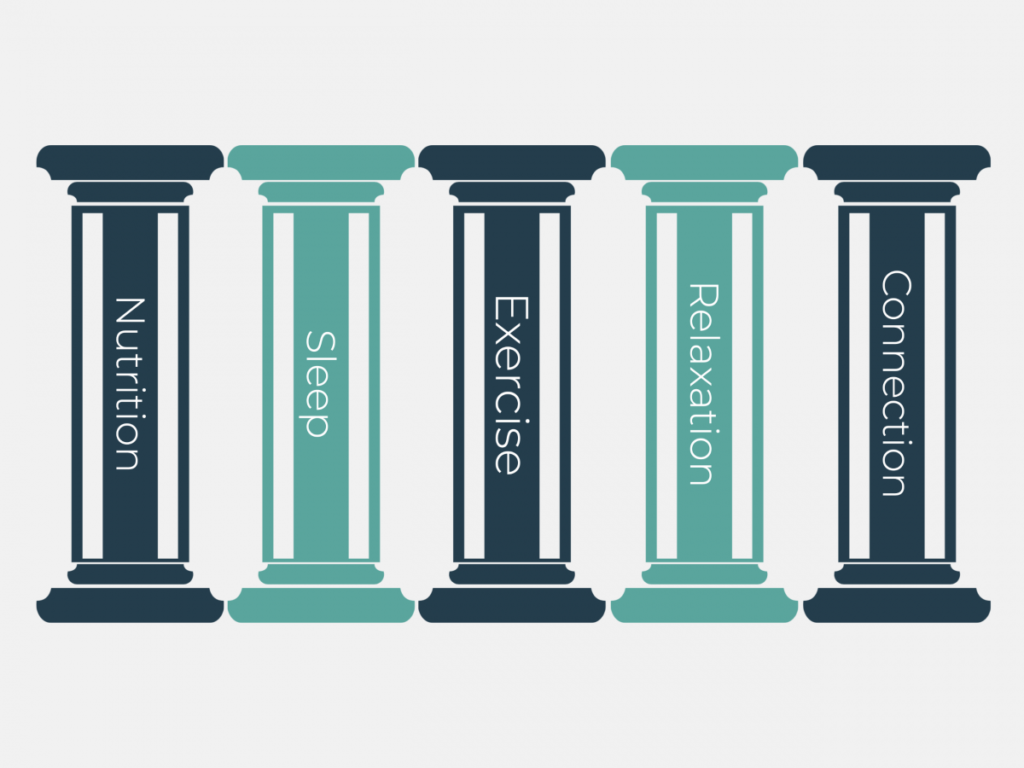
It’s beyond cliché, but you really are what you eat! Serotonin is a hormone that is well known for regulating mood, relaxation, stress-management and happiness levels, as well as muscular performance, bone health and your sleep patterns. Lack of serotonin the lead contributor of depression.
But did you know that 90% of your serotonin lives in your gut? This is a good part of why good gut health is so vital, and this is completely dictated by the range of nutrients in your food on a daily basis. Too many ultra-processed foods like sweets, savoury snacks and fast food wreak havoc on gut flora and cause hormonal imbalance that will affect your mood, whereas foods like pro-biotic yoghurts, fresh fruit and veg and wholefoods create a natural happy hormone factory right in your gut!
We all know how grumpy and sluggish we feel after a bad night’s sleep. The American Centre for Disease Control and Prevention (CDC) have found that more than 35% of people could be classed as sleep deprived, meaning that approximately 1 in 3 aren’t getting enough sleep on a chronic basis. With lockdown, ‘sleep inertia’ has increased as people are feeling groggy and disengaged all day without enough structure or stimulation to restore a sense of natural rhythm, and this continues into the night leading to poor sleep quality.
‘Sleep hygiene’ is crucial to good sleep. We’ve written about this in more detail here.
In fact, while we’re here, let’s talk exercise! Keeping the body fit isn’t just about looking good or making a good 5k; regular exercise is the backbone of robust mental health. Endorphins after exercise not only set you up for a ‘high’ for the rest of your day, but also for structured, restorative sleep and regulated stress levels thanks to a release in cortisol. Consistent exercise also increases those serotonin levels we talked about earlier, helping you balance your mood and emotions long-term.
It’s not all plans, training and discipline. Without unwinding and indulging in some real self-care, the mind does not get the space it needs to feel the benefits of eating, sleeping and moving well. This can be as simple as taking a moment to drink a cup of tea with a book in quiet peace, or it may be prioritising a few minutes a day to practise meditation or yoga. Apps like Headspace offer a whole range of quick one-off meditations as well as courses to help you manage tension or anxieties, or you can practise simple mindfulness on a walk without a phone or music.
One of the big challenges of this time is being unable to meet with friends and loved ones as we would like, but finding a way to keep up this kind of social connection is vital for wellbeing. Humans are social creatures by nature, so this time of working from home and distancing rules has been particularly difficult for us all.
Fighting off the Zoom fatigue and scheduling a time to have quality conversation with distant friends or families via video can do the world of good. Remember that we can still take outdoor walks with one person from another household, and support is only ever a phone call away.
This time is temporary, and we will be able to get back to the lifestyles we enjoy soon. Building up your mental health ‘pillars’ in a way that works best for you is the first step to mental health resilience, and will empower you to adapt to changes beyond your control.
Let us help. Membership to Natural Fit Club gives you unlimited access to bespoke exercise training to suit your body, a tranquil spa in the heart of town equipped with a luxurious heated swimming pool, hydropool, sauna, steam room and treatments, a health-inspired café and a team of experienced trainers on hand at all times to guide and support you.
We’ve recently had a light dusting of snow across the south-east of England and while it’s lovely to look out the window and see a wintry snowscape, it’s a signal that the air has got a whole lot chillier than it’s been in a little while. Even if you’re spending time inside in the safe and warm, the winter conditions can affect your inside and out in subtle ways that snowball (sorry!) into something a bit more problematic down the line, such as your skin health.
Skin often feels drier in the winter from the sharpness of cold weather outdoors, but also due to the contrast with the artificially warmed indoors. Warm, dry air being pumped around your home might feel comfy in the moment, but it saps your skin of the hydration it needs to renew and stay youthful and elastic. Of course there are creams and serums in abundance these days, but the best care, as with most things, starts from within.
Here are our 10 favourite ingredients for a natural, delicious all-round skincare regimen that starts at your kitchen table:
Your skin can be a great visual indicator of your wellbeing within. If you feel tired and undernourished, your skin will let you know! Learning the advantages of different nutritional elements can help you build a fulfilling, balanced diet that helps you, your body and your mind rediscover your natural potential.
Let’s take out the guesswork. The Natural Fit Metabolic Screening is available to Club Members, and gives you a detailed, personalised breakdown of your body’s specific nutritional needs so that you can live your best for longer. Speak to the Natural Fit Club Tunbridge Wells team today or enquire with Natural Fit Club Brighton & Hove to learn more.
Life looks a little different today to last Christmas, and with that changes the Christmas shopping strategy. A week away from the big day, online shopping options and delivery slots are starting to dry up but fortunately we have a wonderful, thriving shopping scene right on our doorstep in lovely Royal Tunbridge Wells!
In a year when supporting our brilliant independent businesses by shopping local has never been so important, we’ve chosen our top 10 favourite gifts and fabulous tier-proof experiences to help you keep Christmas special and close to home.
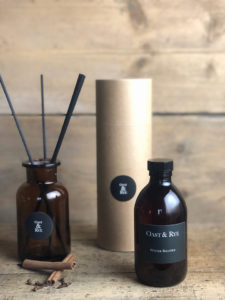
Oast & Rye’s scented home products are perfect for elevating any room. They will even refill your existing bottle so that you can keep enjoying luxury fragrance with your environmental conscience intact.
£35 – Click here to view
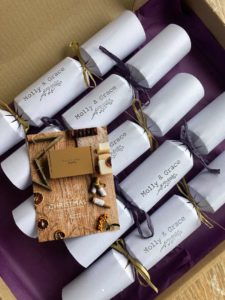
You can buy from Molly & Grace’s Christmas range via craft shopping site, Etsy. The Christmas Cracker Box starts at £25 and includes picks from their range of cruelty-free, plastic-free, eco-friendly natural skincare products, all created in Tunbridge Wells.
Local customers can arrange pick-up to avoid costs and delays with Royal Mail.
£25 –Click here to view

Sleepy Wilson is a fabulous Tunbridge Wells-based loungewear and sleepwear brand, specialising in silk night fashion to make every night’s sleep a masterclass in elegance. We particularly love their Rainforest Butterfly set!
£335 for set – Click here to view blouse – Click here to view trousers

Sleepy Wilson also offer silk sleepwear accessories for that friend who loves a touch of decadence, such as this wonderful set including a headband, eye mask and scrunchie.
£79 for set – Click here for set in Rainforest Butterfly
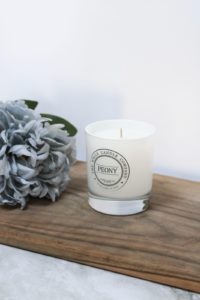
Handpoured in a home studio in Royal Tunbridge Wells, The Wells Candle Company’s range of luxury fragrance candles and reed diffusers are a perfect seasonal accent.
£15 – Click here to view

Natural Fit Club Tunbridge Wells is offering exclusive gift vouchers to Club Members, including a Massage Package, Exercise Transformation Package and Relax Package. All are available to buy for loved ones who are also Members.
Buying for a non-Member? Treat your favourite person to a Day Experience at the Club as your guest, including full use of the spa, gym and studios plus a 50-minute massage and lunch for two (with wine and Prosecco).
£ varies – Members may enquire via 01892 267535 for more information.

Balance Athenian aesthetic with a punky edge in your garden with a sculpture planter from Chilstone, long-established stonemasons in Langton Green, just outside Tunbridge Wells. You’ll be in great company; Chilstone products also feature in renowned gardens such as Kensington Palace!
£95+VAT – Click here to view

Know someone who’s seriously missing the pub? Set them up with 3 months of 12 artisanal craft beers per month, direct to their door courtesy of Fuggles in Tonbridge.
£35 per month for 3 months – Click here to view
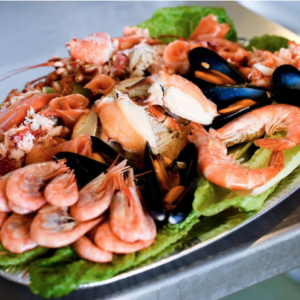
A Tunbridge Wells favourite, Sankey’s have a whole host of platters and seafood delights available for order as part of their Christmas range. While we can’t dine with them currently, you can easily bring a taste of the Sankey’s experience home for your foodie friend. The Lobster Platter includes 1 cooked and prepared lobster, 1 dressed crab, smoked salmon, crevettes, mussels, Greenland prawns, crayfish and smoked mackerel.
£55 for lobster platter – Click here to view

Treat your favourite person (or yourself!) to Membership of Royal Tunbridge Wells’ luxury Members’ Club, with spa, gym, classes, personal training studios, lounges and café.
Members can gift 3-month membership packages by speaking to the Club Team.
Non-members are welcome to book a tour on our website or by phone.
Gyms and spas are fully open and operating in all tiers of restrictions. Natural Fit has tailored its services to maintain a high quality experience whilst assuring members’ wellbeing at all times.
Enquire via 01892 267535 or Book Your Tour here.
Many of us are spending a lot of time indoors at the moment. This probably means that your body may be experiencing an unusual lack of movement, closing down into sedentary positions without the little bursts of activity that pepper a normal day. Too much time sitting down can wreak all sorts of havoc on the body, from loss in cardiovascular fitness or muscular definition to daily aches and pains that crop up through poor posture.
A daily walk, run or cycle outdoors gives your body a break and an opportunity to revitalise (here are our favourite tips to make the most of your walk). However, it is equally important to help your body recalibrate through stretching to make sure that you loosen up the muscles before jumping from inaction to action and avoid shocking the body.
Stretching helps repair muscles and strengthen between workouts by boosting your circulation, thus oxygenating the muscles and channeling vital nutrients around the body. It is especially important to support good posture and avoid unnecessary pressure on the joints, bones and back muscles. Remember: it’s important to only stretch muscles when they’re already warm to avoid injury. Just going up and down the stairs or doing a spot of tidying-up will do!
Here are a few great stretches for spending a lot of time indoors and for walking alike:
Keeping safe and well doesn’t have to mean sacrificing mobility and movement. Staying flexible and fit can be easy and injury-free. At Natural Fit, we look forward to welcoming you to our restorative and revitalising classes, treatments and personalised training programmes.
Learn more about our bespoke screening service and virtual personal training studio. Enquire now.
Finding it hard to exercise at the moment? Worried about losing fitness? Looking for ways to keep your health up to scratch away from the gym?
Under normal circumstances, keeping up a regular routine of exercise is vital for both physical and mental health and that is still the case in whatever ways you can – running, cycling, walking or at-home workouts. But it may also be helpful to take this time to check-in with other important factors for a healthy lifestyle, such as sleep.
Sleep is essential for every single aspect of life. It allows cells to regenerate, the brain to restore and hormones to rebalance. The American Centre for Disease Control and Prevention (CDC) have found that more than 35% of people could be classed as sleep deprived, meaning that approximately 1 in 3 aren’t getting enough sleep on a chronic basis. Cheri Mah, a sleep medicine researcher at Stanford University and University of California, San Francisco, suggests that sleep is in fact more important than exercise for a healthy lifestyle.
Why is this?
It’s very common to resort to sacrificing an hour or two of morning snooze to cram a workout in, but sleep is actually crucial for exercise to have effective results. Your muscles are built when you sleep, because the microtears in the muscle get a chance to heal and re-nourish. In fact, not getting enough sleep can lead to weight gain, as it not only reduces time spent restoring the body but also throws off your hunger/appetite hormones. Lack of sleep puts your body under stress, raising cortisol levels which inhibits weight loss and drives up ghrelin, i.e. the hunger hormone. Combined with sluggishness and lack of energy, this encourages you to eat impulsively and reach for the more high-calorie convenience foods.
Likewise, lack of sleep also changes fat cells because the proper use of insulin gets disrupted. Good use of insulin means that fat cells remove fatty acids and lipids from the bloodstream, but the University of Chicago found that insulin sensitivity dropped by over 30% in those who reported getting less sleep. Insulin helps regulate energy, and so this means that poor sleep can have a huge impact on your metabolism and lead to bigger problems like weight gain and diabetes.
As with all things, it’s about balance. Good sleep = good exercise and often vice versa, so we’ve offered more great tips for getting a good night’s sleep here. Rather than trading shut-eye, try to see your workout as an immovable part of your day, like an appointment with yourself that fits in around your sleep schedule. Prioritise your evenings and bring bedtime forwards if you prefer to exercise in the morning, or else find a way to make an evening workout compatible with your post-work routine.
All of our members get access to a bespoke, personal screening service to help you make lifestyle choices to fuel and enrich your body and mind, and restore your natural potential.
Everyone has the same question on their mind right now: how to keep myself and my family as healthy as possible during a pandemic?
While we’re all familiar with the defence strategies that have dominated the last few months – washing hands for 20 seconds, social distancing, hand sanitiser aplenty – the best defence starts from within. Viruses attack our immune systems, so how can we best ensure that our immunity is in good enough shape to be up to the challenge?
Fuelling the body to keep you safe from disease doesn’t have to be a challenge. Listening to what your body needs and maintaining balance and variety will ensure that your immune system has the tools at hand to maintain good health and wellness. Enjoy getting creative with vitamin-rich recipes and your family’s immune systems will take care of the rest!
At Natural Fit, we offer expert nutrition and exercise screening and supportive, personal programmes to help restore your natural potential. Enquire now to learn more.
Has it ever been more important to look after body and mind? All of us have experienced a change in routine and it can be to let physical health fall to the wayside as we try to adjust. But, in the case of a pandemic, that is exactly the opposite of what the body needs to protect us. So how can we still ensure to put our best foot forward?
While the gym may not be available to you right now, you can still make full use of your other freedoms in this unusual time. Walking is brilliant exercise that often goes under-recognised for its benefits, from strengthening and toning the leg muscles and glutes to helping with balance in a low-impact way.
Turn your daily walk into something to look forward to with our 10 simple tips:
Staying home as much as possible doesn’t mean that you should miss out on the joys of springtime that are within walking distance of your home. Infuse your day with healthy structure to keep your body and mind in good shape to give yourself the best chances of staying well.
Natural Fit looks forward to welcoming you to our brand new club for relaxation, revitalisation and exercise to rejuvenate you.
Enquire now to learn more.
Along with ‘wellness’, ‘clean living’ and ‘peganism’, another wellbeing buzzword has emerged in the last couple of years: ‘sleep hygiene’. However, unlike the more Goop-y practices out there, practising good sleep hygiene really is vital for your physical and mental health.
Practising ‘good sleep hygiene’ means developing habits or a routine that causes you to sleep better and more regularly. A good night’s sleep is the basis of all good health, as it allows your cells to regenerate, aids your physical fitness and restores your mental faculties to leave you more sharp, productive and emotionally balanced for the coming day. Insufficient sleep is linked to all kinds of health problems, including depression and even a higher risk of cardiovascular disease.
If you struggle to find the time to get enough sleep or you are well accustomed to watching the hours tick away night after night, this might all sound easier said than done. Our straight-forward guide breaks it down to just 5 steps:
Salt is everywhere. Alongside sugar, it’s a go-to ingredient for brands to bolster up the taste factor of their products. In 1982, TIME magazine published a cover featuring a salt-shaker emblazoned with the words “A New Villain”, setting in stone the widely held belief that salt is dangerous for your health and will, inevitably, give you a heart attack. And yet, salt continues to persist in every meal, every snack, every McNugget and every Michelin-star côte de boeuf.
‘Sodium’ and ‘salt’ are often used interchangeably, but salt is made up of both sodium and chlorine. While sodium level is what causes the fuss about possible raised blood pressure, salt in itself is crucial to life. The average human needs 1g of salt per day for good nerve and muscular function plus regulation of fluids in the body. Trouble is, most of us can’t even envisage only eating 1g of salt per day, especially when the average Brit consumes around 8 grams – way beyond what we need to function and even in excess of the recommended 6g daily limit. But how much of an effect does this really have on our health?
In the fitness world, a trainer or nutritionist will advise that you limit your salt intake because too much sodium can cause water retention, making you feel bloated and holding ‘water weight’ in your body that can be misleading if you are trying to lose or gain weight. But the crux of the salt debate revolves around its possible relationship to heart disease. Some studies have suggested that excessive sodium in the diet raises blood pressure, increasing risk of heart failure, while restricting salt intake can lower blood pressure to reduce the risk. This has meant that patients with heart failure are invariably advised to drastically limit their salt intake.
The issue is still highly contested, as some argue that the difference in blood pressure across differing salt levels is too marginal to be definitely cause-and-effect. We get over 75% of the salt in our diet from processed food, from cured meats to baked goods, and these salty foods are often also high in calories, trans fats and sugars. We can’t necessarily know that it is specifically the salt that causes all of the trouble.
Simply put, controlling just salt levels alone is tricky so there are too many variables in the research to be totally conclusive that salt = bad. In fact, native cultures with high levels of naturally occurring salt in their diets don’t exhibit the same degree of heart issues as Western populations!
This doesn’t mean to say that salt is fine for anybody to have in any amount. Each person benefits from an intuitive, nutritious diet focused on moderation. It is always best to follow the advice of your GP depending on your personal health needs, but a good start is to limit processed foods and eat as naturally as you can to fuel your body to its full potential.
Why not try our personal metabolism screen – designed to identify exactly which foods you should be eating based on your personal requirements and allow you to make the best choices for each meal.
At Natural Fit, we believe in restoring your body to its natural potential by helping you nurture good nutrition and exercise habits for a healthier, more invigorated you.
Enquire now to learn more about our bespoke screening service and exercise classes, exclusive to our membership.
Nowadays, the warnings about smoking are abundant. We’ve all heard them a million and one times. Any school-child could give you a comprehensive run-down of why smoking is bad for you: the long-term damage to the lungs, the yellowed fingers and the inevitably shorter lifespan, to name just a few. However, since it’s National No Smoking Day, we wanted to delve into some of the dangerous effects of smoking that still fly a little under the radar or might seem small enough to be counteracted with an otherwise healthy lifestyle.
The unfortunate fact is that while an active lifestyle is a salve to plenty of physical or psychological ailments or symptoms, exercising while smoking is a little more complicated and can’t necessarily undo what smoking does to the body.
Why is this?
Exercise is a positive investment in your wellbeing even if you find smoking a tough vice to kick. With a touch of care to make sure that you don’t push your body beyond its limits, staying active can help your body and mind stay in a fit state and even help you quit smoking or other troublesome habits to help you unlock your natural potential.
Try our gentle cardiovascular screen, designed to identify both your current level of cardio fitness and the type of training that will best help you achieve your desired goals.